Themed collection New Talent: Americas

Front cover
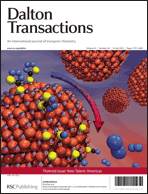
Inside front cover

Back cover

Back matter
Contents list
New talent: Americas
Welcome to this themed issue of Dalton Transactions entitled “New talent: Americas”

Dalton Trans., 2012,41, 7781-7781
https://doi.org/10.1039/C2DT90087D
Cycloruthenated sensitizers: improving the dye-sensitized solar cell with classical inorganic chemistry principles
A divergence from the conventional approach to chromophore design has led to the establishment of many exciting new benchmarks for the dye-sensitized solar cell (DSSC), including the first documented power conversion efficiency in excess of 12%.
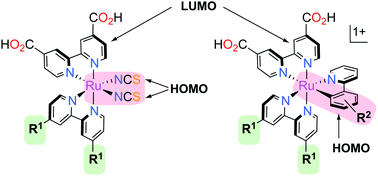
Dalton Trans., 2012,41, 7814-7829
https://doi.org/10.1039/C2DT30825H
Synthesis and reactivity of 2-azametallacyclobutanes
2-Azametallacyclobutanes have been reported for a number of metals. This Perspective provides a brief overview of 2-azametallacyclobutanes, focusing on complexes in which the ring nitrogen is anionic (amido).
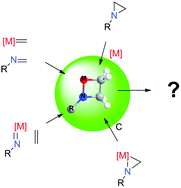
Dalton Trans., 2012,41, 7782-7791
https://doi.org/10.1039/C2DT30639E
Perceiving molecular themes in the structures and bonding of intermetallic phases: the role of Hückel theory in an ab initio era
Modern ab initio methods have the potential to transform the way simple orbital-based Hückel calculations are used to examine new chemical bonding phenomena. In this perspective we illustrate a simple and general method for translating DFT results on crystalline phases into effective Hückel models that can reveal molecular themes at work in intermetallic phases.
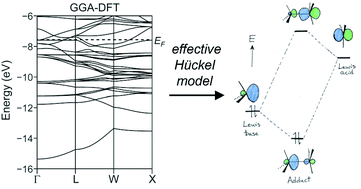
Dalton Trans., 2012,41, 7801-7813
https://doi.org/10.1039/C2DT30298E
Combining form with function – the dawn of phosphole -based functional materials
The phosphole unit can provide a variety of intriguing opportunities for the design of highly functional organic materials.
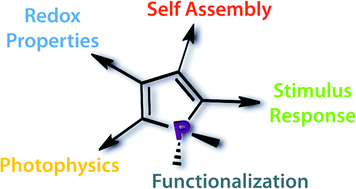
Dalton Trans., 2012,41, 7792-7800
https://doi.org/10.1039/C2DT00024E
Splitting water with rust: hematite photoelectrochemistry
The promise, problems and progress of photocatalytic water oxidation with iron oxide.
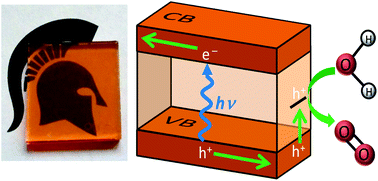
Dalton Trans., 2012,41, 7830-7834
https://doi.org/10.1039/C2DT30340J
Transfer hydrogenation with a ferrocene diamide ruthenium complex
The use of a 1,1′-ferrocenediamide ruthenium complex as a mediator for base-free transfer hydrogenation is reported.

Dalton Trans., 2012,41, 7852-7854
https://doi.org/10.1039/C2DT31075A
Lanthanide(III) 2-naphthoxide complexes stabilized by interligand non-covalent interactions
Lithium–lanthanide-2-naphthoxide complexes are found to have solvent dependent solution structures and related monomeric/dimeric solid state structures.
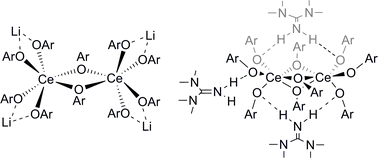
Dalton Trans., 2012,41, 7870-7872
https://doi.org/10.1039/C2DT30445G
A tris(2-quinolylmethyl)amine scaffold that promotes hydrogen bonding within the secondary coordination sphere
An amide-appended quinoline-based ligand was prepared that presents three hydrogen bond acceptor groups to a metal-bound substrate.
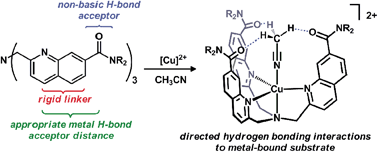
Dalton Trans., 2012,41, 7886-7889
https://doi.org/10.1039/C2DT30406F
Synthesis and characterization of a tris(2-hydroxyphenyl)methane-based cryptand and its triiron(III) complex
Reaction of tris(5-amino-2-ethoxy-3-isopropylphenyl)methane and pyridine-2,6-dicarbonyl-dichloride affords a multi-dentate cryptand in 48% yield.
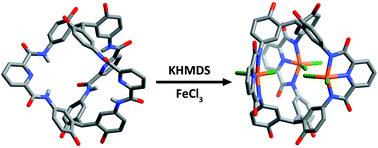
Dalton Trans., 2012,41, 7866-7869
https://doi.org/10.1039/C2DT30312D
One-electron Ni(II)/(I) redox couple: potential role in hydrogen activation and production
The complementary reactions of forming and activating hydrogen are studied using a nickel system with a wide bite-angle diphosphine ligand.
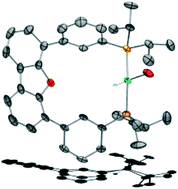
Dalton Trans., 2012,41, 7862-7865
https://doi.org/10.1039/C2DT30176H
Facile synthesis of anisotropic Au@SiO2 core–shell nanostructures
A versatile method for synthesizing anisotropic Au@SiO2 core–shell nanostructures is reported, circumventing the traditional multi-step surface functionalization strategies.

Dalton Trans., 2012,41, 7879-7882
https://doi.org/10.1039/C2DT30409K
Conversion of {Fe(NO)2}10 dinitrosyl iron to nitrato iron(III) species by molecular oxygen
Dioxygen reactivity of a new {Fe(NO)2}10 dinitrosyl iron complex is reported.

Dalton Trans., 2012,41, 7849-7851
https://doi.org/10.1039/C2DT30443K
Diisocyanoarene-linked pentacarbonylvanadate(I−) ions as building blocks in a supramolecular charge-transfer framework assembled through noncovalent π–π and contact ion interactions
A supramolecular ensemble held together via synergistic π-stacking and CoIII/VI− contact ion interactions was synthesized via three different routes and represents the first subvalent, diisocyanoarene-linked polynuclear organometallics.

Dalton Trans., 2012,41, 7845-7848
https://doi.org/10.1039/C2DT30488K
Complexes of Cu(I) supported by a tris(ketimine) tripod
The rigid tris(ketimine) tripod N(ArCNHPh)3 readily coordinates a number of CuI salts, generating complexes that exhibit trigonal pyramidal geometries in the solid-state.

Dalton Trans., 2012,41, 7859-7861
https://doi.org/10.1039/C2DT30101F
Utilizing a copper MOF as a reagent in a solvent mediated reaction to form a topologically distinct MOF
Employing a semi-rigid di-1,2,4-triazole ligand leads to the formation of new MOFs [Cu4(L)4(SO4)4]·4[Cu(H2O)6(SO4)] (3) and [Cu6(L)3(SO4)5(OH)2(H2O)6]·13H2O (4).
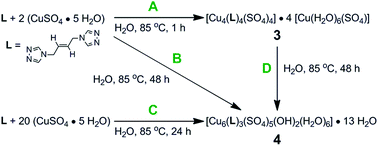
Dalton Trans., 2012,41, 7839-7841
https://doi.org/10.1039/C2DT30078H
A heterobimetallic metal–organic framework with tunable reactive metal sites: synthesis, characterization, and reactivity
A technique for preparing heterobimetallic frameworks is demonstrated by the synthesis of an isostructural family of two-dimensional solids (Et2NH2)[Cd(H2O)][(MTCPP)], where M = H2, Fe(II), Co(II), Ni(II), Cu(II), Zn(II), and Pd(II).
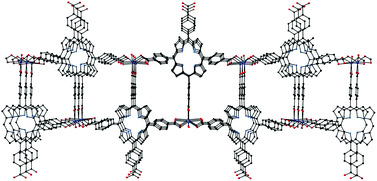
Dalton Trans., 2012,41, 7855-7858
https://doi.org/10.1039/C2DT30184A
Convenient C-alkylation of the [HCB11Cl11]− carborane anion
C-alkylation of [HCB11Cl11]− to [RCB11Cl11]− can be conveniently accomplished with KOBut/R-I in 80–90% isolated yield.
![Graphical abstract: Convenient C-alkylation of the [HCB11Cl11]− carborane anion](/en/Image/Get?imageInfo.ImageType=GA&imageInfo.ImageIdentifier.ManuscriptID=C2DT12431A&imageInfo.ImageIdentifier.Year=2012)
Dalton Trans., 2012,41, 7842-7844
https://doi.org/10.1039/C2DT12431A
Nanocrystal ligand exchange with 1,2,3,4-thiatriazole-5-thiolate and its facile in situ conversion to thiocyanate
Surface-bound 1,2,3,4-thiatriazole-5-thiolate on CdSe nanocrystals decomposes under remarkably mild heating (<100 °C) to give an all-inorganic ligand shell (comprised of thiocyanate and sulfur) with loss of nitrogen gas.
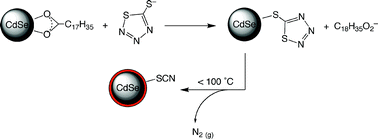
Dalton Trans., 2012,41, 7835-7838
https://doi.org/10.1039/C2DT30197K
The metal selectivity of a short peptide maquette imitating the high-affinity metal-binding site of E. coli HypB
A seven-residue peptide based on the high-affinity metal-binding site of E. coli HypB maintains the nickel-binding activity of the full-length protein.
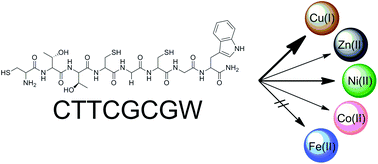
Dalton Trans., 2012,41, 7876-7878
https://doi.org/10.1039/C2DT30132F
Thermally stable rare earth dialkyl complexes supported by a novel bis(phosphinimine)pyrrole ligand
A novel bis(phosphinimine)pyrrole based ligand has been prepared and used to support thermally stable and base free dialkyl rare earth (Er, Lu, Sc) complexes.
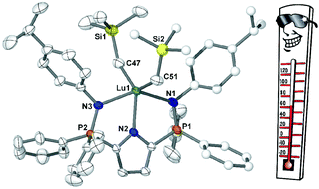
Dalton Trans., 2012,41, 7873-7875
https://doi.org/10.1039/C2DT12485H
Generation of [(IPr)Pd(PR2Cl)] complexes via P–Cl reductive elimination
We report the preparation and isolation of the first well-defined [(NHC)Pd(PR2Cl)] complexes, which are formed by way of an unusual P–Cl bond reductive elimination process.
![Graphical abstract: Generation of [(IPr)Pd(PR2Cl)] complexes via P–Cl reductive elimination](/en/Image/Get?imageInfo.ImageType=GA&imageInfo.ImageIdentifier.ManuscriptID=C1DT11910A&imageInfo.ImageIdentifier.Year=2012)
Dalton Trans., 2012,41, 7883-7885
https://doi.org/10.1039/C1DT11910A
Aluminum complexes of the redox-active [ONO] pincer ligand
Aluminum(III) complexes with two different redox-active ligands show evidence of non-innocent behavior.
![Graphical abstract: Aluminum complexes of the redox-active [ONO] pincer ligand](/en/Image/Get?imageInfo.ImageType=GA&imageInfo.ImageIdentifier.ManuscriptID=C2DT30295K&imageInfo.ImageIdentifier.Year=2012)
Dalton Trans., 2012,41, 8144-8152
https://doi.org/10.1039/C2DT30295K
Reaction of carbon dioxide with a palladium –alkyl complex supported by a bis-NHC framework
Reaction of a cis-dimethylpalladium complex supported by a bis-NHC ligand framework with wet CO2 leads to formation of the corresponding κ2-carbonato complex.
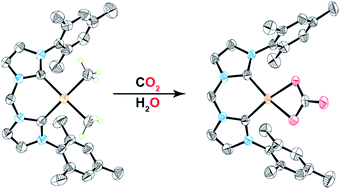
Dalton Trans., 2012,41, 7977-7983
https://doi.org/10.1039/C2DT30676J
Changes in the heme ligation during folding of a Geobacter sulfurreducens sensor GSU0935
The capture and release of a non-native His ligand to the heme during folding of a Geobacter sulfurreducens sensor GSU0935 demonstrates the flexibility of the heme environment which may relate to the domain sensor function.
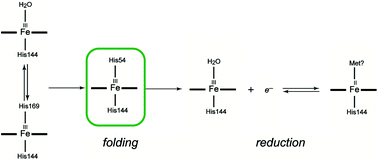
Dalton Trans., 2012,41, 8022-8030
https://doi.org/10.1039/C2DT30166K
Oxidation of dimethyldi(2-pyridyl)borato PtIIMen complexes, n = 1, 0, with H2O2: tandem B-to-Pt methyl group migration and formation of C–O bond
New dimethyldi(2-pyridyl)borato (dmdpb) platinum(II) complexes, (dmdpb)PtIIMe(SMe2) (1), (dmdpb)PtII(L)(SMe2)+, L = MeOH (2), MeCN (3), supported by dimethylsulfide ligand and featuring one (1) or no hydrocarbyls at the metal (2, 3) were prepared and their oxidation with hydrogen peroxide was studied.
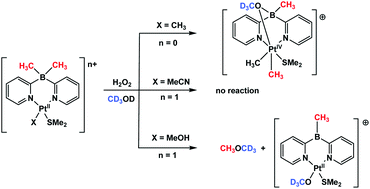
Dalton Trans., 2012,41, 8116-8122
https://doi.org/10.1039/C2DT30905J
Rigid NON- and NSN-ligand complexes of tetravalent and trivalent uranium: comparison of U–OAr2 and U–SAr2 bonding
Uranium(III) and (IV) complexes of extremely rigid, dianionic NON-donor and NSN-donor ligands have been prepared, and the extent of covalency in U–SAr2versus U–OAr2 bonding was assessed using DFT and Atoms in Molecules calculations.
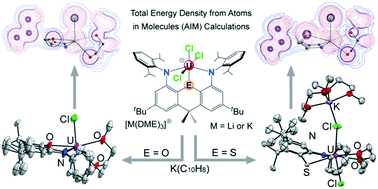
Dalton Trans., 2012,41, 8175-8189
https://doi.org/10.1039/C2DT30247K
Synthesis, spectroscopic analysis and photolabilization of water-soluble ruthenium(III)–nitrosyl complexes
The syntheses and spectroscopic properties of a series of {RuNO}6 complexes with TPA as the coligand are reported, and the photolability of the bound NO ligand in these systems is investigated in comparison to analogous edta complexes.
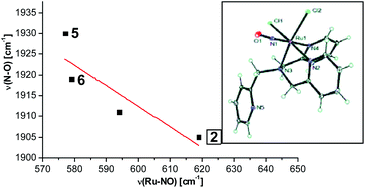
Dalton Trans., 2012,41, 8047-8059
https://doi.org/10.1039/C2DT30464C
Investigation of the synthesis, activation, and isosteric heats of CO2 adsorption of the isostructural series of metal–organic frameworks M3(BTC)2 (M = Cr, Fe, Ni, Cu, Mo, Ru)
The synthesis, activation, and heats of CO2 adsorption for the M3(BTC)2 (HKUST-1) isostructural series with M = Cr, Fe, Ni, Zn, Ni, Cu, Mo were investigated to gain insight into the impact of CO2–metal interactions for CO2 storage/separation.
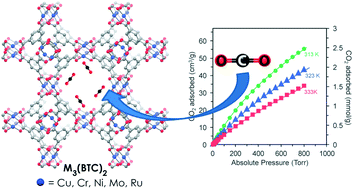
Dalton Trans., 2012,41, 7931-7938
https://doi.org/10.1039/C2DT30372H
Electronic structure and solution behavior of a tris(N,N′-diphenylhydrazido)manganese(IV) propeller complex
The solution-phase magnetic susceptibility of the tris(κ2-hydrazide)manganese(IV) propeller complex varies with temperature and concentration. The variable solution phase magnetic susceptibility is explained by a dimerization mechanism whereby the monomeric S = 3/2 complex is in equilibrium with an antiferromagnetically coupled S = 0 binuclear complex in solution.
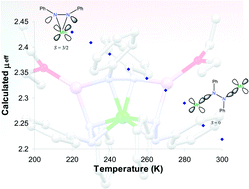
Dalton Trans., 2012,41, 8093-8097
https://doi.org/10.1039/C2DT30493G
Elucidating the structure-dependent photocatalytic properties of Bi2WO6: a synthesis guided investigation
The photocatalytic properties of Bi2WO6 microspheres and microplates prepared by ultrasonic spray pyrolysis have been evaluated.
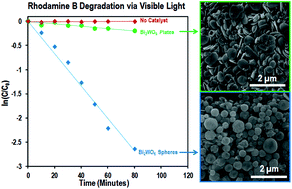
Dalton Trans., 2012,41, 7939-7945
https://doi.org/10.1039/C2DT30097D
A responsive particulate MRI contrast agent for copper(I): a cautionary tale
The relaxivity of particulate MRI contrast agents does not increase continuously with increasing aggregation induced by increasing concentration of analyte.
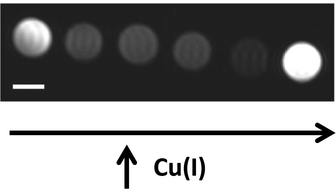
Dalton Trans., 2012,41, 8039-8046
https://doi.org/10.1039/C2DT30416C
Cyclometalated platinum(II) diimine complexes: synthetically tuning the photophysical and electrochemical properties
A family of phosphorescent, cyclometalated Pt(II) complexes was synthesized and their photophysical and electrochemical properties were investigated.
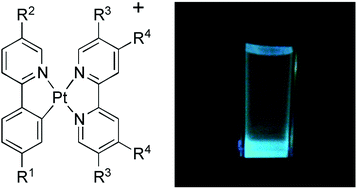
Dalton Trans., 2012,41, 8077-8085
https://doi.org/10.1039/C2DT30259D
Cyclopentadienyl chromium diimine and pyridine -imine complexes: ligand -based radicals and metal-based redox chemistry
Organochromium complexes with anionic radical diimine and pyridine-imine ligands were synthesized, characterized, and investigated using theoretical calculations.
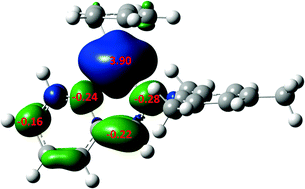
Dalton Trans., 2012,41, 7920-7930
https://doi.org/10.1039/C2DT30160A
Metallomacrocycles as ligands: synthesis and characterisation of aluminium-bridged bisglyoximato complexes of palladium and iron
Dialuminiummacrocycles based on bisglyoximato moieties were prepared and their coordination chemistry with FeII and PdII was investigated.
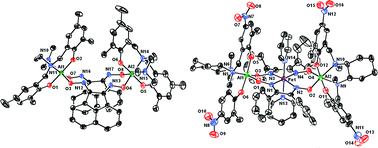
Dalton Trans., 2012,41, 8086-8092
https://doi.org/10.1039/C2DT30285C
Coordination and structural properties of encumbering 6-mesityl-2-picolinate complexes
The coordination and structural properties of a new class of encumbering picolinate ligands for transition-metal and main-group ions are presented.

Dalton Trans., 2012,41, 8031-8038
https://doi.org/10.1039/C2DT30585B
Two-step hydrothermal synthesis of submicron Li1+xNi0.5Mn1.5O4−δ for lithium-ion battery cathodes (x = 0.02, δ = 0.12)
A facile two-step hydrothermal method is developed for the large-scale preparation of lithium nickel manganese oxide spinel as a cathode material for lithium ion batteries.
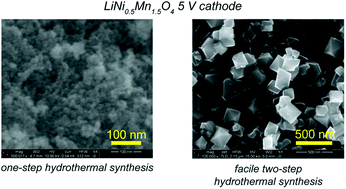
Dalton Trans., 2012,41, 8067-8076
https://doi.org/10.1039/C2DT30351E
Dissecting the role of DNA sequence in Helicobacter pylori NikR/DNA recognition
Helicobacter pylori NikR recognizes DNA with high affinity when thymine is present at a specific position on the DNA sequence.
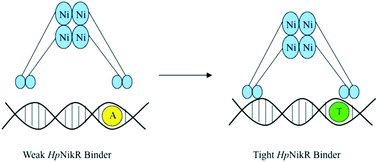
Dalton Trans., 2012,41, 7946-7951
https://doi.org/10.1039/C2DT30504F
sp
2 C–H activation of dimethyl fumarate by a [(Cp*Co)2-μ-(η4 : η4-toluene)] complex
Well defined, sp2 C–H bond activation of dimethyl fumarate is mediated by a [(Cp*Co)2-μ-(η4 : η4-toluene)] complex.
![Graphical abstract: sp 2 C–H activation of dimethyl fumarate by a [(Cp*Co)2-μ-(η4 : η4-toluene)] complex](/en/Image/Get?imageInfo.ImageType=GA&imageInfo.ImageIdentifier.ManuscriptID=C2DT30288H&imageInfo.ImageIdentifier.Year=2012)
Dalton Trans., 2012,41, 8190-8197
https://doi.org/10.1039/C2DT30288H
A mechanistic investigation of carbon–hydrogen bond stannylation : synthesis and characterization of nickel catalysts
The isolation of a catalyst for C–H bond stannylation allows for insight into the mechanism of this novel functionalization reaction.
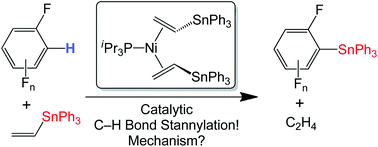
Dalton Trans., 2012,41, 8135-8143
https://doi.org/10.1039/C2DT30310H
Non-innocent ligand behaviour of a bimetallic Cu complex employing a bridging catecholate
The oxidation chemistry of a bimetallic Cu complex employing a non-innocent dioxolene bridge is explored.
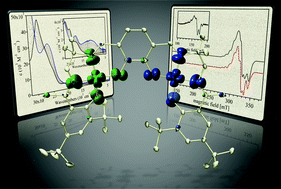
Dalton Trans., 2012,41, 7905-7914
https://doi.org/10.1039/C2DT30444A
Synthesis of U(IV) imidos from Tp*2U(CH2Ph) (Tp* = hydrotris(3,5-dimethylpyrazolyl)borate) by extrusion of bibenzyl
A family of uranium(IV) imido species, Tp*2U(NR), have been synthesized by loss of bibenzyl from the uranium(III) alkyl, Tp*2UCH2Ph.
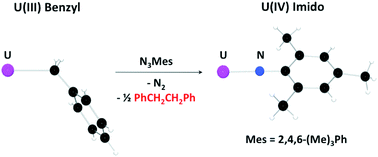
Dalton Trans., 2012,41, 7952-7958
https://doi.org/10.1039/C2DT12439D
Substituent effects on Ni–S bond dissociation energies and kinetic stability of nickel arylthiolate complexes supported by a bis(phosphinite)-based pincer ligand
Effects of ligand substituents on Ni–S bond lengths, bond dissociation energies, and nucleophilicity of a series of nickel thiolate complexes have been investigated.
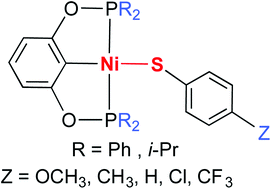
Dalton Trans., 2012,41, 7959-7968
https://doi.org/10.1039/C2DT30407D
Cycloaddition reactivity studies of first-row transition metal–azide complexes and alkynes : an inorganic click reaction for metalloenzyme inhibitor synthesis
The cycloaddition reaction between first-row transition metal–azide complexes and alkynes was investigated and the metal–triazolate products were structurally characterized.
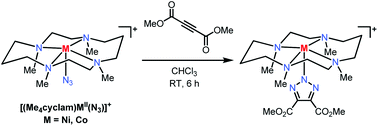
Dalton Trans., 2012,41, 8010-8021
https://doi.org/10.1039/C2DT30145H
A redox series of gallium(III) complexes: ligand -based two-electron oxidation affords a gallium–thiolate complex
Two-electron oxidation of [(IP2−)2Ga]− by MeSSMe yields (IP−)2Ga(SMe) via a ligand-based change in oxidation state.
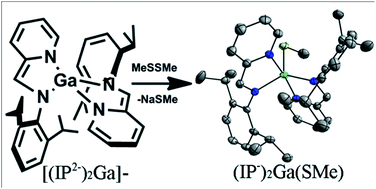
Dalton Trans., 2012,41, 7969-7976
https://doi.org/10.1039/C2DT30112A
Synthesis, characterization and thermal properties of trimetallic N3–Cr![[quadruple bond, length as m-dash]](https://www.rsc.org/images/entities/char_e003.gif) Cr⋯M–N3 azide complexes with M = Cr, Mn, Fe, and Co
Cr⋯M–N3 azide complexes with M = Cr, Mn, Fe, and Co
Described here are two novel synthetic pathways toward the preparation of Cr2M(dpa)4(N3)2 complexes, and characterization of these compounds.
![Graphical abstract: Synthesis, characterization and thermal properties of trimetallic N3–Cr [[quadruple bond, length as m-dash]] Cr⋯M–N3 azide complexes with M = Cr, Mn, Fe, and Co](/en/Image/Get?imageInfo.ImageType=GA&imageInfo.ImageIdentifier.ManuscriptID=C2DT30150D&imageInfo.ImageIdentifier.Year=2012)
Dalton Trans., 2012,41, 8153-8161
https://doi.org/10.1039/C2DT30150D
Yttrium (amidate) complexes for catalytic C–N bond formation. Rapid, room temperature amidation of aldehydes
An yttrium (amidate) complex can catalyze the room temperature amidation of aldehydes with amines in only 5 min.
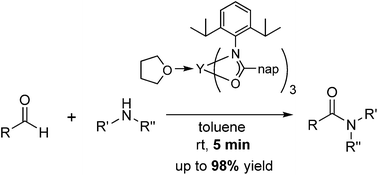
Dalton Trans., 2012,41, 7897-7904
https://doi.org/10.1039/C2DT30214D
Synthesis and electronic properties of a pentafluoroethyl-derivatized nickel pincer complex
A pentafluoroethyl-derivatized nickel pincer complex was synthesized, and its electronic properties were evaluated by electrochemical and computational methods.
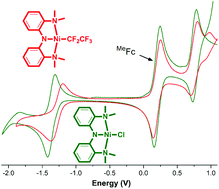
Dalton Trans., 2012,41, 7915-7919
https://doi.org/10.1039/C2DT30131H
Quantifying factors that influence metal ion release in photocaged complexes using ZinCast derivatives
Two generations of nitrobenzhydrol-based photocages for Zn2+ have been prepared and characterized.

Dalton Trans., 2012,41, 8162-8174
https://doi.org/10.1039/C2DT30135K
Effects of ligand tuning on dinuclear indium catalysts for lactide polymerization
Functionalized diaminophenols were investigated as ligands for dinuclear indium catalysts for the ring-opening polymerization of racemic lactide. Changes in ligand sterics have a significant impact on the structure and reactivity of the complexes. The dissociation of these catalysts in the presence of lactide was investigated.
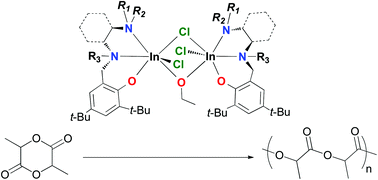
Dalton Trans., 2012,41, 8123-8134
https://doi.org/10.1039/C2DT30148B
Gas sorption and luminescence properties of a terbium(III)-phosphine oxide coordination material with two-dimensional pore topology
PCM-15 is a terbium(III)-triphenylphosphine oxide coordination polymer that exhibits reversible tuning of the luminescence quantum yield, based on desolvation and resolvation of the metal centres. It also has a large capacity for low-temperature small molecule sorption.
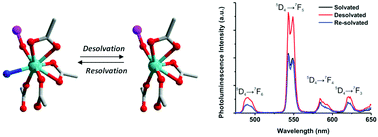
Dalton Trans., 2012,41, 8003-8009
https://doi.org/10.1039/C2DT30138E
Chemistry of the heavy group 15 elements with the pyridyl tethered 1,2-bis(imino)acenaphthene “clamshell” ligand
A new redox route utilizing cobaltocene to generate a Pn(I) synthon from Pn(III) was developed. Subsequent 4 + 2 cycloaddition with a α-diimine gives N-heterocyclic chloropnictine. In the absence of a reductant a donor–acceptor complex is formed.

Dalton Trans., 2012,41, 7890-7896
https://doi.org/10.1039/C2DT30171G
Copper-catalyzed oxidation of azolines to azoles
We report herein convenient, aerobic conditions for the oxidation of thiazolines to thiazoles and data regarding the oxidation mechanism.
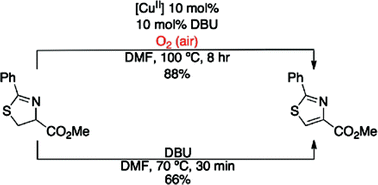
Dalton Trans., 2012,41, 7994-8002
https://doi.org/10.1039/C2DT00025C
First structural evidence for multiple alkali metals between sandwich decks in a metallocene
A tetralithio salt (1) derived by treating 1,4-bis(trimethylsilyl)-cyclooctatriene with nBuLi serves as the first structural evidence for a multi-alkali metallocene.
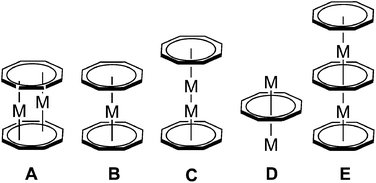
Dalton Trans., 2012,41, 8060-8066
https://doi.org/10.1039/C2DT30164D
Synthesis and investigation of the metal–metal interactions in early/late heterobimetallic complexes linking group 5 imido fragments to Co(I)
Imido coordination to Group V metals in Nb–Co and Ta–Co heterobimetallic complexes decreases metal–metal interactions.
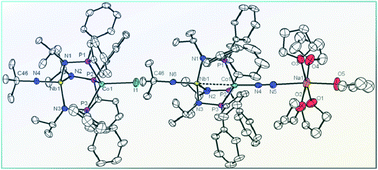
Dalton Trans., 2012,41, 8111-8115
https://doi.org/10.1039/C2DT00034B
Is histidine dissociation a critical component of the NO/H-NOX signaling mechanism? Insights from X-ray absorption spectroscopy
Structural analysis of H-NOX domains reveals incomplete histidine dissociation upon NO binding, challenging this widely hypothesized requirement for NO/H-NOX signaling.
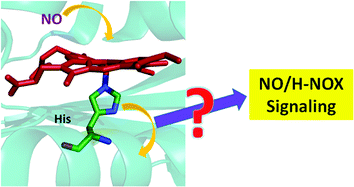
Dalton Trans., 2012,41, 7984-7993
https://doi.org/10.1039/C2DT30147D
Synthesis and computational studies of Mg complexes supported by 2,2′:6,2′′-terpyridine ligands
Through the reactions of substituted terpy ligands with Grignard reagents, we have prepared rare examples of Mg complexes supported by terpy ligands.
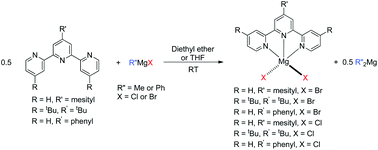
Dalton Trans., 2012,41, 8098-8110
https://doi.org/10.1039/C2DT12426B
About this collection
New Talent: Americas